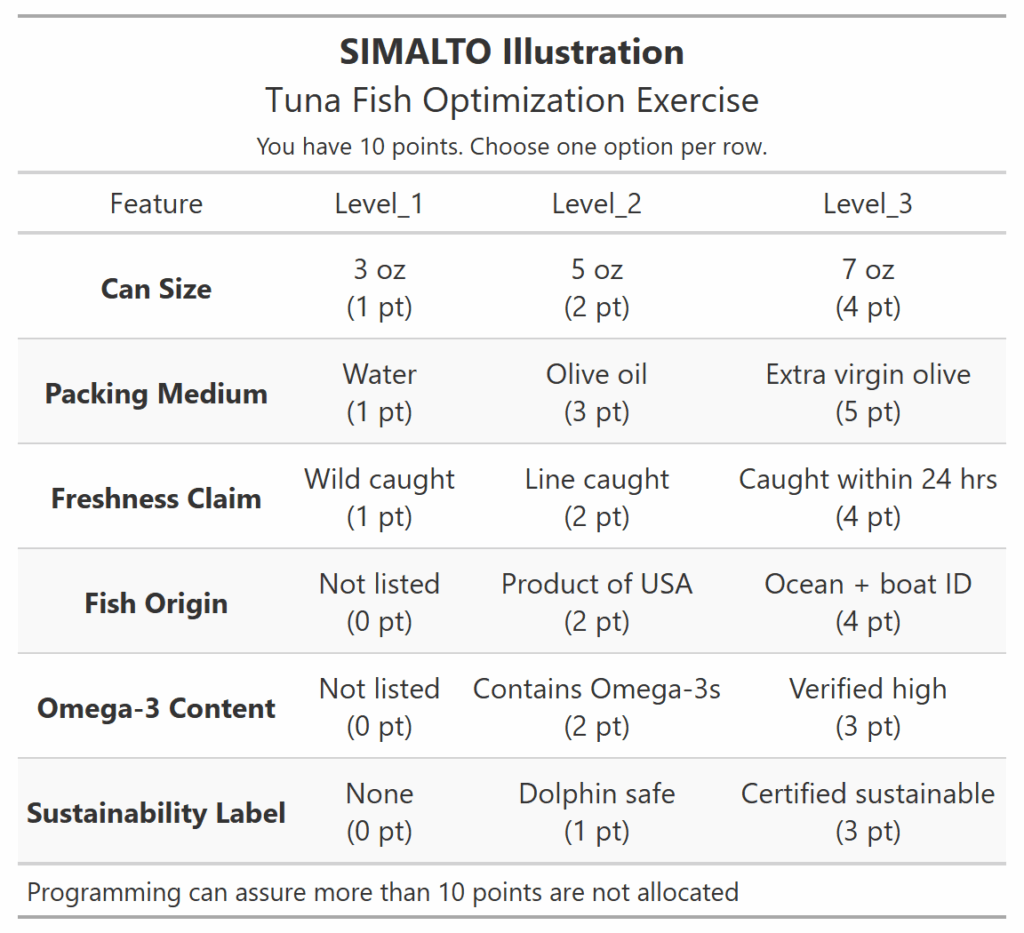SIMALTO in Pricing Strategy: A Smart Grid That Doesn’t Deliver
SIMALTO in Pricing Strategy: A Smart Grid That Doesn’t Deliver
What is SIMALTO?
SIMALTO stands for “Simultaneous Multi-Attribute Level Trade-Off.”
It sounds fancy — and it is. It’s a matrix-based task that looks like a planning tool.
Respondents are given a fixed budget and asked to allocate it across features or services.
Then they’re asked to allocate more budget — often in waves — showing what upgrades they’d prefer next.
It’s like asking people how they’d build a better product, dollar by dollar.
How SIMALTO Works
Each option comes with a cost. Each respondent starts with limited “money.”
They spend that money on features they value most — then reprioritize when more money appears.
This creates a simulated feature hierarchy.
The assumption is: if many people prioritize Feature X, then Feature X matters.
But the key assumption breaks when there’s no real sacrifice.

What SIMALTO Claims to Produce
The promise: a prioritization model that mirrors real-world decision-making.
It feels grounded. Respondents see tradeoffs. They allocate. They reallocate.
Outputs typically include:
- A feature importance score
- A cost-tolerance curve
- A supposed demand “pathway”
But preference allocation is not the same as market demand.
Five Fatal Flaws in SIMALTO
- No real cost. No real tradeoff.
The task uses play money. There’s no behavioral sacrifice. - You don’t shop in a grid.
Nobody makes purchase decisions this way — it’s pure artifact. - Budget = distraction.
The budget framing adds noise, not clarity. - It feels rigorous. It’s not.
The task is engaging — but the math can’t predict anything. - Chosen for appearance, not outcomes.
SIMALTO gets picked when someone wants to “look analytical” without running real models.
It survives because it looks like strategy — not because it delivers it.
Why SIMALTO Still Gets Used
It’s complicated enough to impress.
It produces tidy heatmaps and upgrade paths. Clients nod along.
And when budgets get tight?
It’s more palatable than running a full discrete choice model.
But if you care about pricing — really care — you need more than a planning exercise.
What Real Pricing Research Requires
- A link between preference and revenue
- Realistic shopping context
- Competitive options, not just upgrades
- Simulations that can handle forecasting and margin
Strategy starts with the income statement. SIMALTO doesn’t make it that far.
